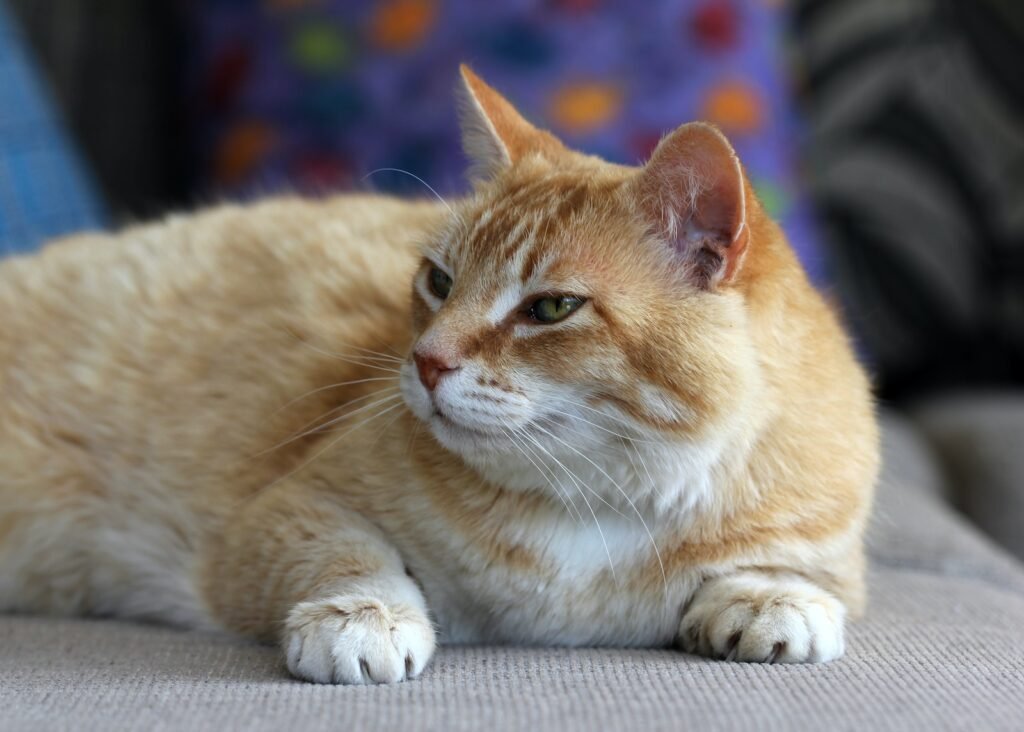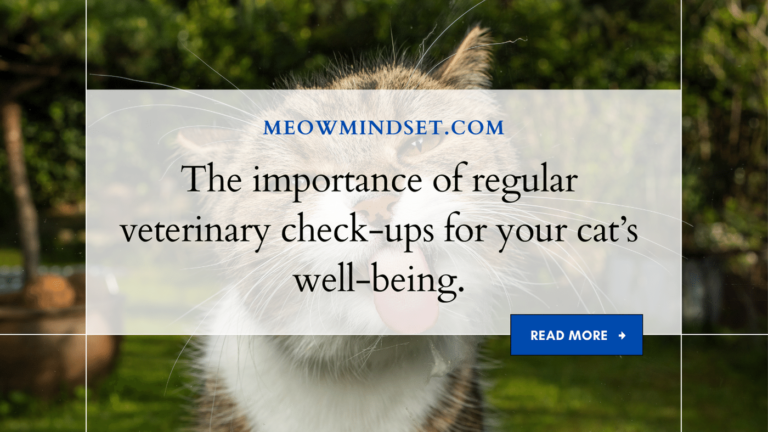How to introduce new foods to your cat’s diet without causing digestive issues.
Meow! Calling all cat lovers out there who want to add variety to their furry friends’ diet without upsetting their tummies. As much as we love giving our cats the same food that they’ve grown accustomed to, introducing new foods can be beneficial for their overall health and nutrition.
However, it’s vital to do it gradually and with care in order not to cause digestive issues like vomiting or diarrhea. In this blog post, we’ll share some practical tips on how you can introduce new foods safely and smoothly into your cat’s diet. So let’s get started and give your feline friend a gastronomic adventure they won’t forget!
The Science of Food Allergies in Cats

Due to the fact that cats are obligate carnivores, their digestive system is specifically designed to process meat and other animal-based proteins. This means that they’re more likely to develop food allergies than dogs or humans, as their immune system is more geared towards digesting animal proteins.
However, not all food allergies are created equal in cats. While some foods may cause problems for a human, a cat’s digestive tracts are actually quite capable of handling them. In fact, introducing new foods slowly and gradually is usually the best way to go about it without causing any digestive issues.
Start by offering your cat small pieces of the new food on a daily basis. If there are no adverse reactions (ie: no vomiting or diarrhea), slowly increase the amount offered until your cat is eating the entire meal. If there are any signs of discomfort (ie: bloating or gas), then back off a bit and wait until things have calmed down before reintroducing the full meal.
Be sure to monitor your cat closely for any changes in behavior or appetite during this time, as anything out of the ordinary should be considered an indication that food allergies may be brewing. If problems do arise, don’t hesitate to consult with your veterinarian for further advice.
The Role of the Digestive System in Foods
When introducing new foods to your cat’s diet, it is important to keep in mind the role the digestive system plays in digesting these foods. Some cats are able to comfortably eat a variety of new foods while others may experience digestive problems if their diet is too restricted.
It is also important to consider your cat’s appetite and how much they are eating at any given time. If your cat isn’t eating enough food or consuming large portions of small items, it may be difficult for them to digest larger meals full of unfamiliar food. In general, you should only introduce new foods one meal at a time and make sure your cat eats until he or she is satisfied.
Different Types of Cats
There are a few different types of cats, each with their own dietary needs. If you’re new to having a cat, it’s helpful to know what type of cat you have so that you can start feeding them the right kind of food.
House Cats: Most house cats are obligate carnivores and need meat to thrive. They’ll eat anything, including dog food, raw meat, and even kibble if they can get it. Give your cat freeze-dried or fresh meat treats as rewards for good behavior or when you’re away from home.
Siamese Cats: Siamese cats are one of the few breeds that aren’t strictly limited by their diet. These cats typically have a balanced diet that includes both wet and dry food, but they may enjoy specific types of foods more than others. Try transitioning your cat gradually over several weeks from their current food to a new brand of canned food that is tailored specifically for siamese cats. This will ensure that they don’t have any digestive issues later on.
Persian Cats: Persians are obligate carnivores and cannot survive on plant-based diets alone like other house cats can. They should be fed small amounts of raw meat every day as their main source of protein, with occasional additions of canned kitten foods or moistening foods such as cottage cheese or heavy cream mixed with shredded vegetables (see feeding tips below). If your persian eats too much at once, drink plenty of water and offer them a bland diet like boiled chicken or boiled fish until their next meal.
Feeding Guidelines for introducing New Foods to a Cat’s Diet

There are a few things to keep in mind when introducing new foods to your cat’s diet. First and foremost, always consult with a veterinarian before making any dietary changes. Second, try to vary the type of food you give your kitty, as well as the quantity. Third, always start with small portions and gradually increase over time. Wait several days after introducing a new food before giving your cat the entire dish. Doing so will allow their digestive system time to adjust.
Here are some general tips for feeding your cat food:
1) Feed Purina One or Kibble Chef canned diet exclusively for the first couple of weeks while your cat is adjusting to their new food. This will help guarantee that they get all the proper nutrients they need and there won’t be any messes caused by loose food spilling from their bowl onto the floor!
2) Make sure to fill each portion of their bowl at least three-quarters full; this will help prevent them from eating too much too quickly and becoming obese.
3) Introduce one new type of food at a time (such as new kinds of meat or poultry), and spread out the introduction over several days rather than giving them all at once so their digestive system has time to adjust.
4) After feeding your cat their new food, wait at least two hours before offering them any other dishes; doing so will help ensure that their intestines have had a chance to rest and digest what was just eaten.
Example Meal Plans for Introducing new Foods to a Cat’s Diet
If you are looking to introduce new foods to your cat’s diet, there are a few things to keep in mind. First, be sure to gradually introduce the food to your cat over a period of several days or weeks. Second, do not force your cat to eat the food. If your cat does have any digestive issues after eating a new food, discontinue feeding the food and see a veterinarian.
The following meal plans give you an overview of some of the most common foods that cats consume and how to introduce them into their diets. These plans are designed for cats over 6 months old and weigh between 4 and 10 pounds.
Raw Meaty Bones: Raw meaty bones are a good source of protein for cats and can be fed as part of their regular diet alongside other raw meats such as chicken or beef. Feeding your cat small bones (<25g) every couple of days is ideal as they will not become stuck in their intestine like larger bones can.
Cooked Meats: Cooked meat can also be added to a cat’s diet and should be feed in smaller amounts more often (every 2-3 days) than raw meaty bones due to the risk of furballs forming. Some Cats enjoy cooked meats best when they are wetted down with water or broth first, providing extra moisture and nutrients that help keep them healthy!Examples include canned tuna, sweetened condensed milk canned salmon, tuna or chicken kibble wetted down with water.
Frozen Meats: Frozen meat is another good option for cats and can be fed in the same way as cooked meats. Frozen meat is pre-prepared and requires no cooking, making it a good option if you are short on time or have a busy schedule. Some frozen meats that are popular with cats include beef, chicken, and lamb.
Canned Wet Food: Canned wet food is a great option for cats because it contains high levels of nutrients such as vitamins, minerals and protein which are essential for their overall health. These kibble-like foods can be soaked in water or broth before feeding to help hydrate them and make them more appetising. Some popular brands of canned wet food for cats include Friskies, Meow Mix, and wet dinner from Iams.
Conclusion
Introducing a new food to your cat’s diet can be a daunting task, but following these guidelines should make the process easier. Start by withholding some of the old food until your cat has had time to adjust to the change.
Next, introduce small amounts of the new food at regular intervals and wait two hours before offering any more. Finally, consult with your veterinarian if you have any questions about introducing a new food to your cat’s diet or if your cat is exhibiting any adverse symptoms.






